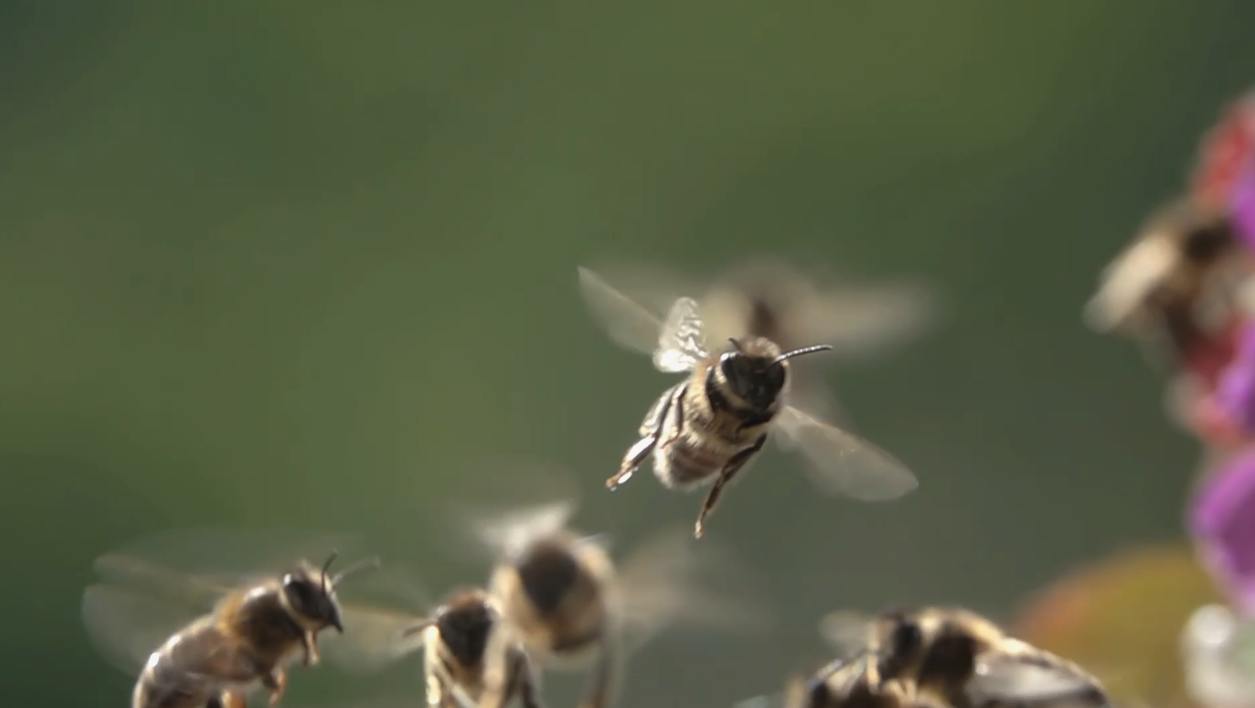
The Shocking Power of Bees
By Gayil Nalls
Sign up for our monthly newsletter!
A fter the thunderstorm, the forest and field glistened with a quiet kind of magic. Droplets clung to blades of grass, tree bark pulsed with life, and the air, rich with the scent of loam and blooming shrubs, hummed with the buzz of bees. As I ambled along the damp path, surrounded by the sweet aftermath of the storm, I noticed a honeybee hovering near a patch of wildflowers reopening in the light.
To the naked eye, the bee’s movements looked like a gentle dance, darting from blossom to blossom with a kind of joyful urgency. But beneath the surface of this ritual was something far more complex, an invisible world of signals and charges. With every beat of its wings against the moist air, the bee accumulated a faint positive electrical charge. It wasn’t much, just enough to tip the scales in nature’s quiet arithmetic. But that charge was its secret weapon.
Flowers, by contrast, held a negative electrical charge. And when the positively charged bee approached, pollen—light, powdery, and equally negative—leapt toward it as if by magic. This attraction was no accident. It was evolution’s invisible handshake, choreographed over millennia, ensuring that life continued to spiral forward. The bee, knowingly or unknowingly, was a living conduit in a vast, interconnected web of electrostatic exchange.
But the story didn’t end there. Honeybees aren’t just passive collectors of pollen. They are sensitive readers of the landscape’s electric whispers. Using tiny hairs on their bodies, bees can detect the weak electrical fields around flowers and respond to the stimuli. If a bloom has already been visited, its charge momentarily neutralized, they can tell. And if a flower is still full of nectar and waiting, its field beckons. With each visit, bees leave behind an altered charge, creating an ever-shifting electrostatic map of the landscape for others to read.
And then there is the swarm—masses of little beings positively charged from their foraging, and the friction against air molecules.
In 2022, a groundbreaking study published in iScience by Ellard R. Hunting and colleagues revealed that when bees gather in large numbers, forming swarms or dense clusters, the aggregate electrical charge of their bodies generates electric fields as strong as those found in thunderstorms. Researchers observed that honeybee swarms could produce atmospheric electric fields ranging from 100 to 1,000 volts per meter. This astonishing effect arises from trillions of tiny, positively charged bodies moving together in the air, enough to influence local atmospheric electricity and affect processes like aerosol behavior and cloud formation as dust, pollen, and water droplets clump together, which is key in the formation of clouds and precipitation.
Additionally, as bees forage, they disturb leaves and flowers, sometimes triggering greater VOC emissions. These VOCs rise into the atmosphere, where they can oxidize and form secondary organic aerosols, cloud condensation nuclei, and even affect radiative balance–how much sunlight is reflected or absorbed.
The implications are profound. This research suggests that animal life, specifically insect activity, may play an unrecognized role in shaping basic weather events. Bees, long known as pollinators, may also be subtle architects of the sky. Their collective charge adds a new dimension to how we understand climate, ecology, and the invisible threads that connect living systems to atmospheric dynamics.
Standing there in the charged atmosphere of the forest edge, I looked up. The clouds had begun to reform in the afternoon light, their edges bright with sun. I could almost imagine the bees’ influence among them, not just as part of the food web below but as engineers of the weather.
The sweet air after rain carried more than the scent of blossoms and wet earth. It carried the electric breath of life, of countless wings and bodies, of signals exchanged and environments shaped. Nature is not passive. It is alive with energy, coursing through roots and rivers and buzzing through the atmosphere in an evolutionary dance. And somewhere in that living current, the bees are still at work, forming a bridge between ground and sky, both one charged flight at a time and in the thunder in the swarm.
Gayil Nalls, PhD is an interdisciplinary artist and theorist. She is the founder of the World Sensorium Conservancy and the editor of its journal, Plantings.
Reference:
Hunting, E. R., et al. (2022). Observed electric charge of insect swarms and their contribution to atmospheric electricity. iScience, 25(11), 105344
Plantings
Issue 49 – July 2025
Also in this issue:
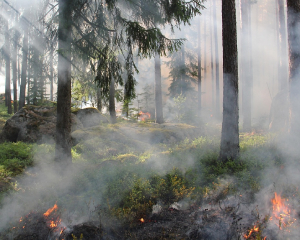
Aromatic Plants at the Crossroads of Fire Resilience and Risk
By Gayil Nalls
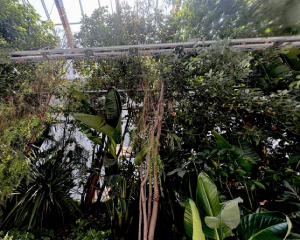
Building Biospheres: Rewilding Architecture at the Venice Biennale
By Gayil Nalls
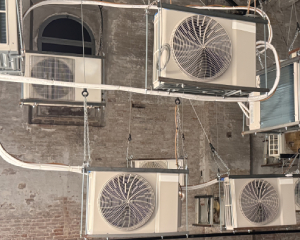
Cool Ideas: Rethinking Air Conditioning with Sebastian Clark Koch
By Gayil Nalls
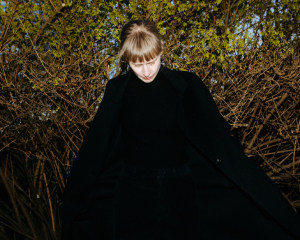
Scents, Sounds, and the Little Things In Between: A Conversation with Jenny Hval
By Ian Sleat

All the Places I Have Breathed
By Caterina Gandolfi

Eat More Plants Recipes:
Grilled Chipotle-Lime Portobello Tacos
By Ian Sleat

As Ireland transitions from the rich, smoky scent of peat-burning to a more sustainable future, its olfactory heritage is evolving. What will become the next iconic aromatic symbol of Ireland?
Click to watch the documentary trailer.

